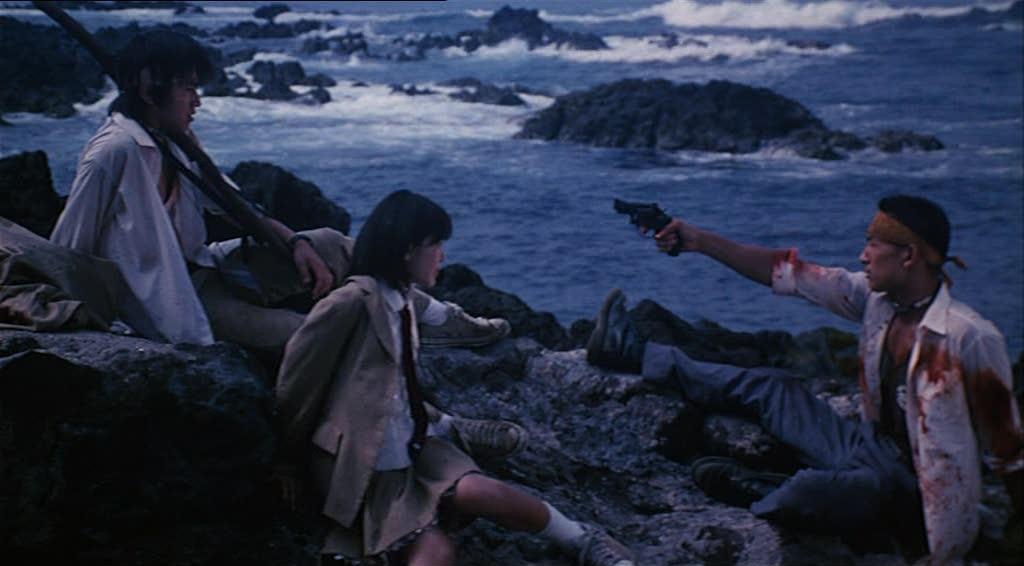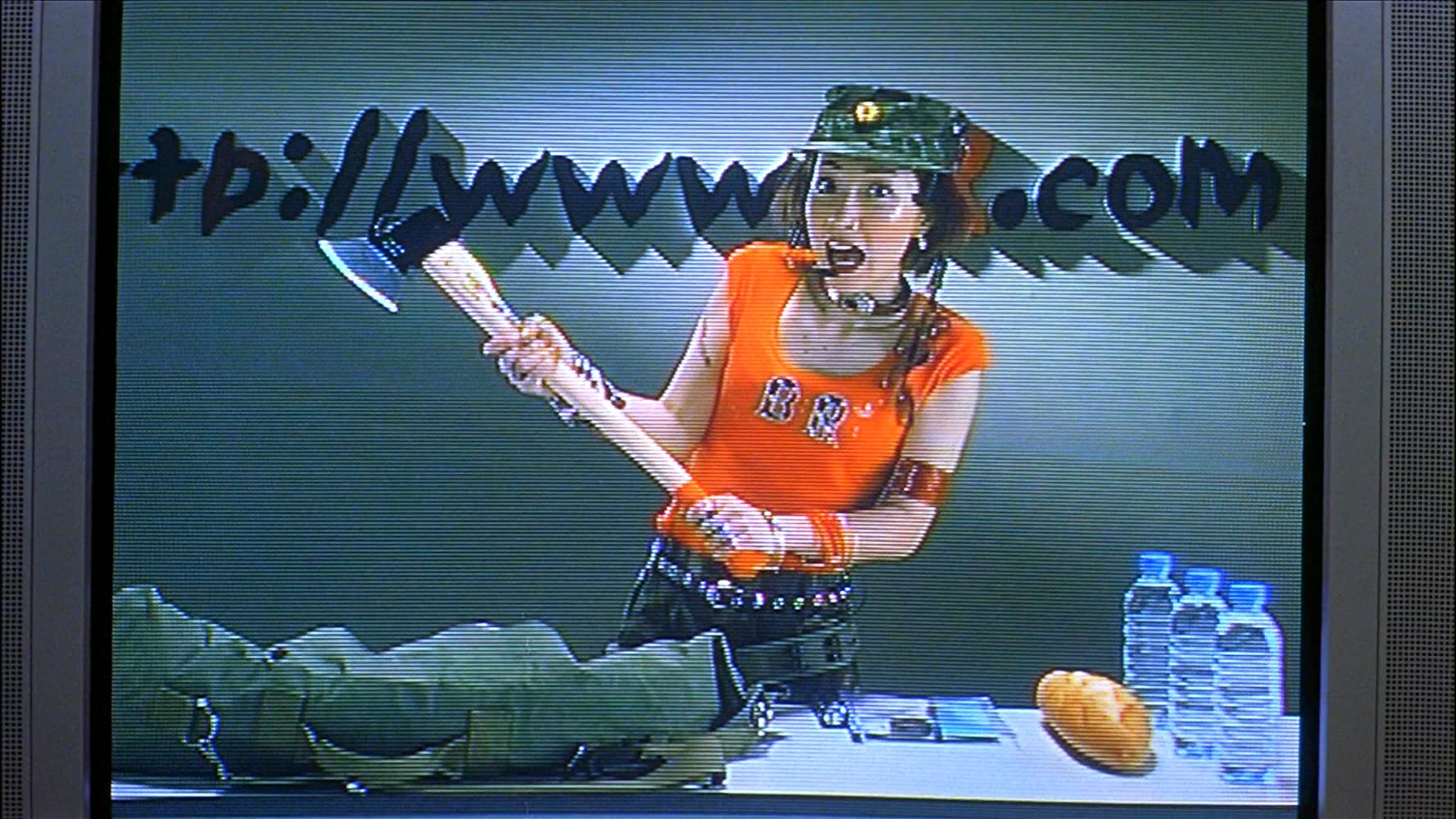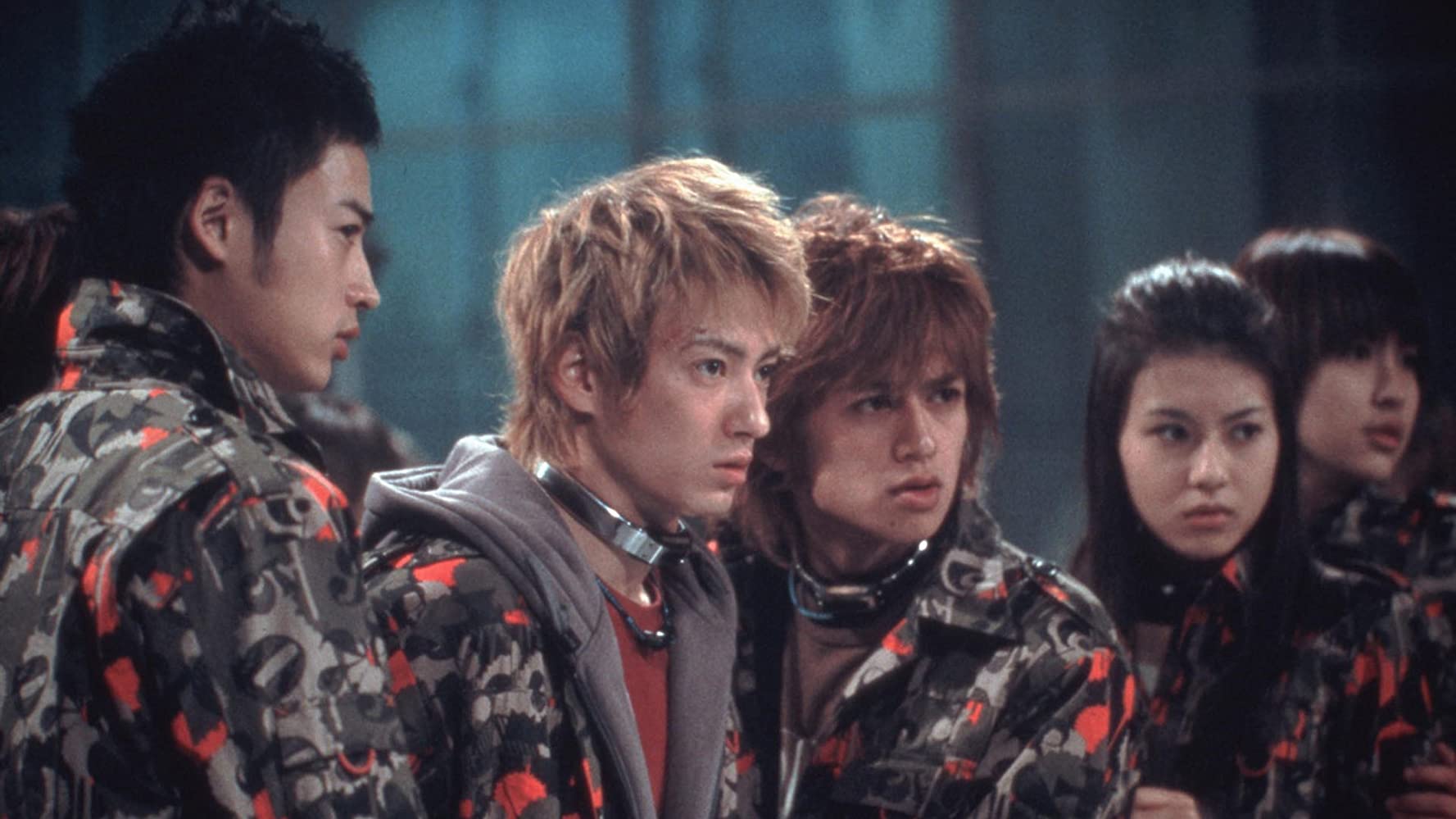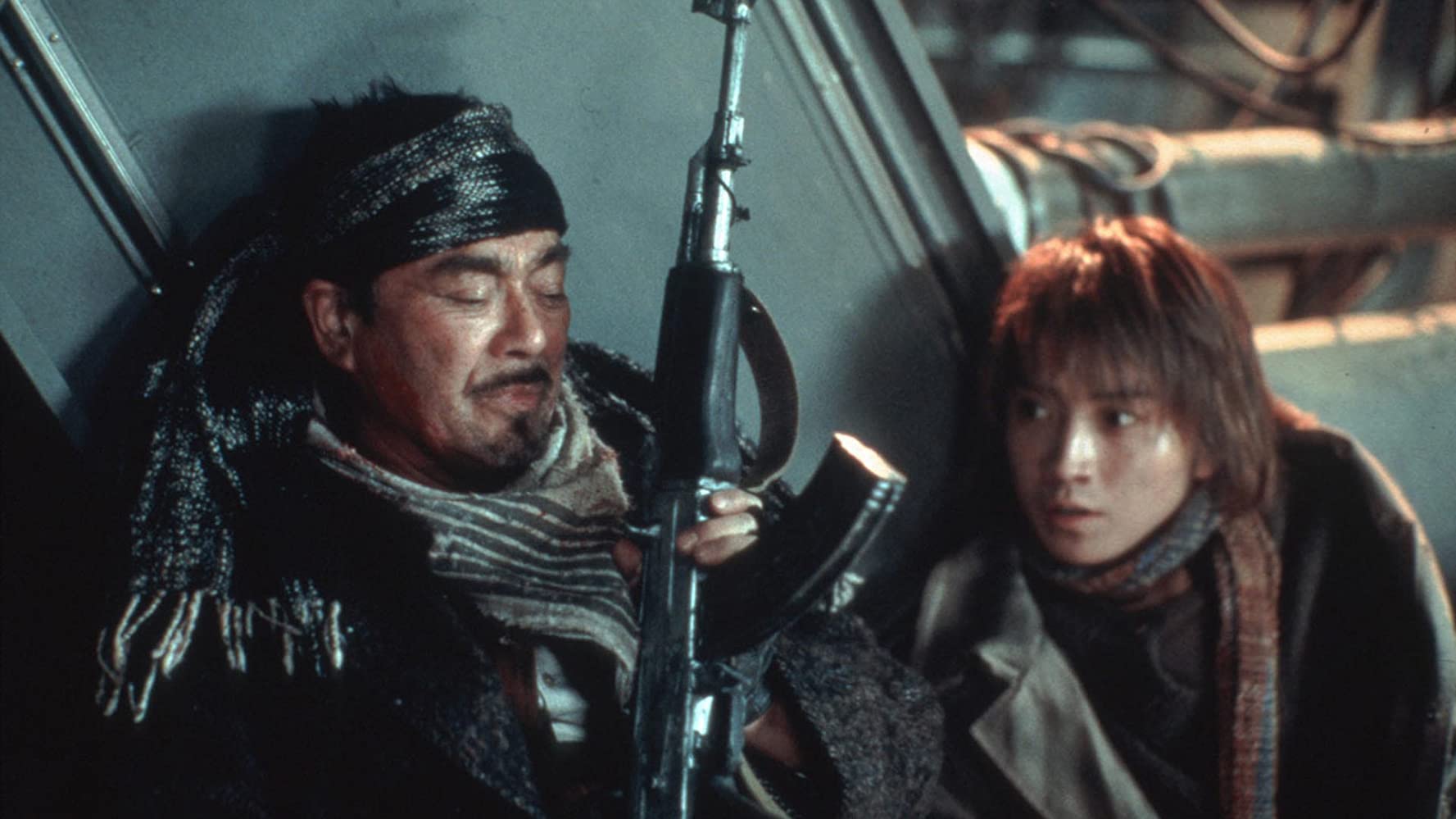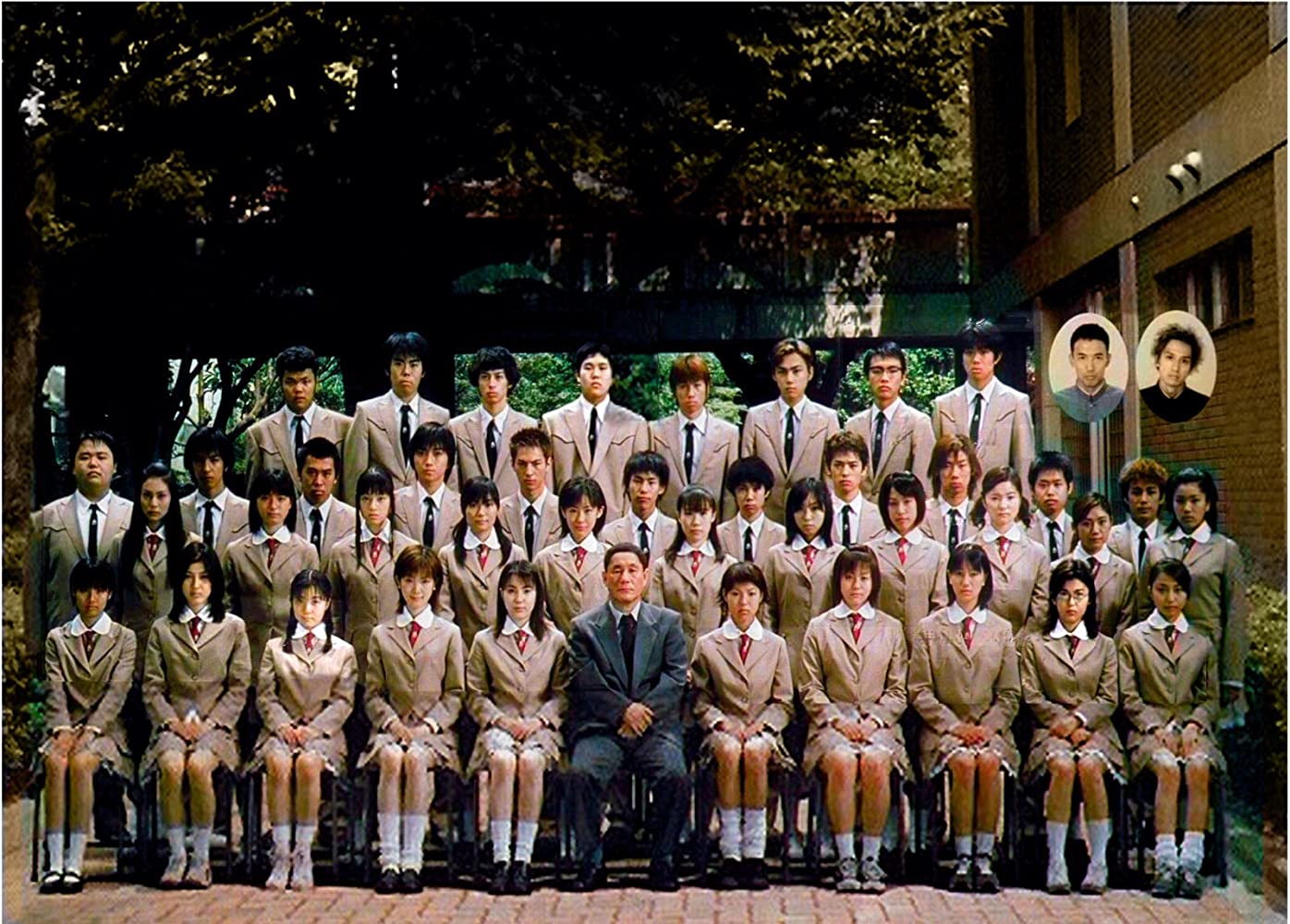Battle Royale is the movie that needs no introduction. The film directed by veteran filmmaker Kinji Fukasaku made its way to the silver screen on December 16, 2000, and it took the popular culture by storm. Apart from the original book, there was also a manga adaptation, and a sequel. In addition, lots of video games, visual novels, and anime used the phrase “battle royale” as an umbrella term to describe the new genre (the last man standing challenges). The harrowing story about 42 students forced to fight each other to the death is a modern morality tale that criticises authoritarian regimes and degradation of our society. Let’s take a look at the classic cult film and its legacy 20 years later.
The story of Battle Royale was initially conceived by a journalist turned writer Koshun Takami. In the mid 1990s, he was struggling to develop his first fiction novel, and the inspiration came in the form of a hallucinatory dream about a teacher who orders his students to kill each other off. Takami wrote the novel and submitted it to the 1997 Japan Horror Fiction Awards competition, but the work was ultimately rejected (due to its highly violent content). Takami eventually managed to publish the novel two years later by Ohta Publishing and it became an instant bestseller.
Toei quickly bought the rights to the adaptation shortly after the novel’s release. The script slightly veers off from Takami’s grim vision of the world by providing ambiguous exposition. So, the story of the film goes like this: Due to economic recession, Japan has fallen into chaos. As a result, many of the youngsters rebelled against authorities. In order to discipline the unruly youth, the government has passed the Battle Royale Act. Each year, one grade 9 class is selected at random and sent to a remote island. They are given instructions, survival gear, and weapons. They are ordered to kill each other. Any sort of rebellion will be punished by death. Any escape attempt will also be punished by death. The only winner of the game is the one student left alive after the time period of three days. This is the story of Class 3-B and their teacher, Kitano.
Kinji Fukasaku signed on to direct the picture because the story reminded him about his own experiences during World War II. Koshun Takami explained in the afterword of the 2009 edition of the novel, that the story is about fear and betrayal. In my opinion, Battle Royale is an outcry about how broken our world is. Evidently, we do not kill students for sport, but maniacs do commit horrible crimes and ordinary people are constantly betrayed by authority figures (politicians, parents, teachers). Not all of the students participating in the game are bad by default: some were made crazy, some act out of fear, and some refuse to participate in this madness (all of their actions are monitored by Kitano and the military). The students of Class 3-B reflect different kinds of people and different approaches to life (all within the grasp of mighty government).
From the making of documentary, one can clearly see that Kinji Fukasaku, while directing on the set, was like a warrior on a battlefield. Getting each shot right was extremely important to him. In addition, it is striking that in his free time, Fuksaku used to drink beer and drive Skyline R32 like a totally laid back guy.
Teenagers playing high school kids approached the matter very seriously, even though some of their roles were small. Nevertheless, the chaos of the motion picture was not reflected on the set. Everyone was in good spirits and ready to work, but the groups of boys and girls tended to stay away from each other. Takeshi Kitano himself seemed very timid during the shooting, but the director managed to bring the badass out of him we all know and enjoy. Interestingly, Kitano drew on his own the famous painting which is featured at the end of the movie and in the sequel.
In fact, there are two versions of Battle Royale available. The theatrical cut runs at 110 minutes and the Special Edition cut which is approximately 10 minutes longer. It features additional scenes that were shot after the original release of the movie, including basketball game flashbacks, Mitsuko Souma’s backstory, and an extended scene between Kitano and Noriko. I personally prefer the theatrical cut due to better pacing.
Speaking about performances, literally everyone gave their best in front of a camera. Of course performances of the three main leads, Tatsuya Fujiwara, Aki Maeda, and Taro Yamamoto, will remain unforgettable. I also enjoyed small parts done by (now legendary) Chiaki Kuriyama and Kou Shibasaki. Takeshi Kitano was great as the teacher. Additionally, we cannot forget about Yuko Miyamura (that crazy awesome voice actress) who played the host of the Battle Royale Video Guide!
Thought-provoking script and gruesome action set pieces are not the only advantages of Battle Royale. Powerful visuals are accompanied by a magnificent music score composed by Masamichi Amano. Battle Royale is a movie that does not need any remake in this day and age. There is constant talk about it in Hollywood, but I hope that nothing will come to fruition. Besides, the Americans made a shameless rip-off, known as The Hunger Games, already!
After the enormous success of Battle Royale in 2000, Toei commissioned a sequel with Kinji Fukasaku returning in the directorial chair. However, the director’s untimely passing at the beginning of the production resulted in Kenta Fukasaku, the director’s son and screenwriter of both Battle Royale films, taking over the project. The story of the sequel distances itself greatly from Takami’s novel: Three years after the events from the previous movie, we see Shuya Nanahara as the leader of the terrorist organisation called Wild Seven. The terrorists declared war against oppressive governments and adults in general. A class of teenagers from Shikanotoride Junior High School are abducted by Japanese authorities and their teacher forces them to participate in a new Battle Royale game. This time, the ultimate goal is to hunt down and kill Shuya Nanahara.
The primary disadvantages of Battle Royale 2: Requiem are overdone action set pieces. At times, it seems as if the movie forgets that it is Battle Royale 2 and turns into Saving Private Ryan 2. Way too much bombastic action and blood (obvious attempt at pleasing horror fans) really disrupt the viewing experience. In addition, while trying to become a meaningful story, the script contains not only strong anti-American sentiments, but also hammers down leftist ideology. This is especially visible in the scene when Shuya enumerates with great respect all the communist-oriented governments across the globe, framing their “revolutions” as the paragon of change that should occur all over the world. This is the moment when the film goes completely bonkers. The sequel throws out the window the message from the first film about suffering and oppression, and replaces it with Marxist manifesto.
This is not to say that there are not positive things about the sequel. In particular, the new class was great. The students felt more vivid and better fleshed out than in the first Battle Royale. In addition, I loved the subplot involving Kitano’s daughter, Shiori. This should have been the main focus of the story, but instead, the filmmakers went with Shuya’s plan to “liberate” the world. Furthermore, the music score composed by Masamichi Amano was also magnificent.
The director’s intention was to make a controversial movie and, indeed, he achieved his goal. I recommend Battle Royale only as a passing trivia from the history Japanese cinema. You can check it out for one time, but I doubt that you will find this sequel to be a satisfactory conclusion of Battle Royale. That does not mean, however, that Battle Royale 2 is riddled only with flaws. There are some positives, but they transpire just occasionally through a politically-charged script.
All things considered, Kinji Fukasaku’s Battle Royale is a timeless cult film that does not need any remakes or more follow-ups. The film will certainly continue to inspire new generations of fans of Japanese pop-culture. In the meantime, all of us should run, no matter how far, run for all we're worth!

